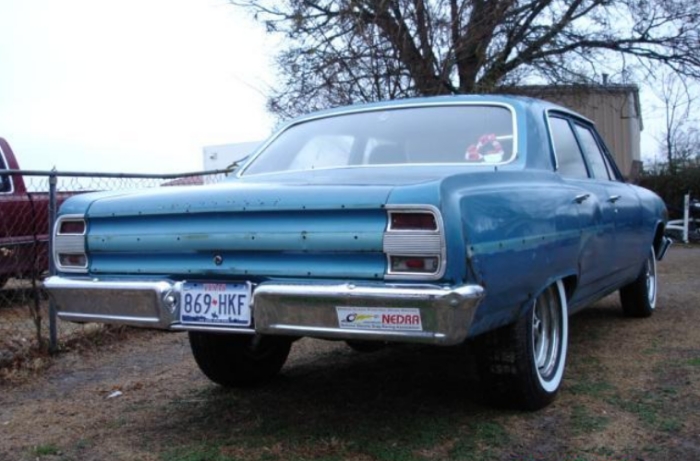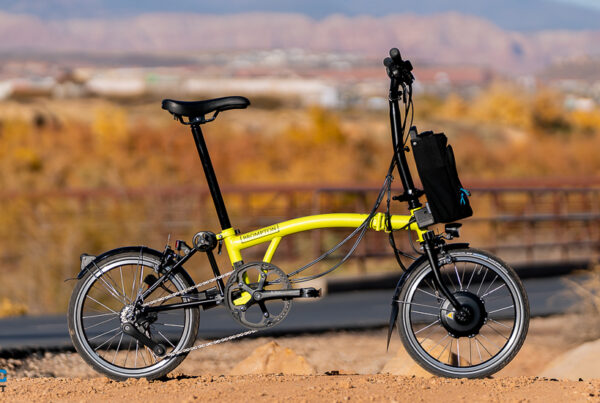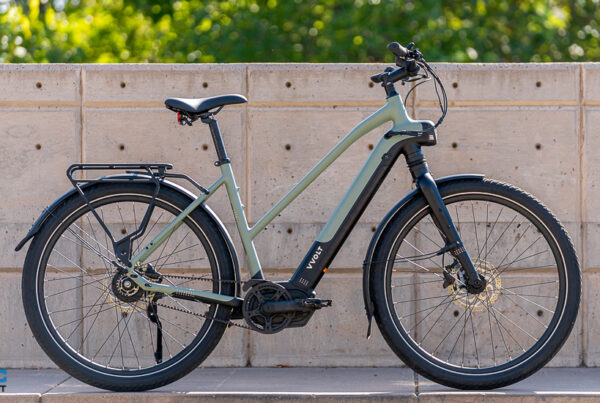Back in March of 2017, we wrote about Denzel, and they were retailing electric bikes that are made by the Eastgem company in China. You might want to take a quick scan of that article before you move on to these new products (click here). Denzel is an unusual company in that they are fairly large, big enough that they have survived several years of ups and downs, but they do not have a large presence in North America.
This is the first time I have taken a look at them since the 2017 article, and the reason is their new “GB200” motor/gearbox/and clutch combination, shown in the header pic above. They do now have a US distributor, along with distributors in Australia, China, and Russia (Click here). I’ve contacted their Connecticut USA office to get more information, and I will report back when they reply.
_______________________________________________
Why a Transmission?
To lower the amps you need for a given speed.
This seems to be a perennial question that never goes away. When the Tesla EV car company was designing their first roadster prototype, it started it’s development as a single motor with a conventional 2-speed transmission. Halfway through the design process they changed the layout to a larger motor with no transmission, because a breakthrough in high-efficiency IGBT’s meant that their controllers could now flow more amps without overheating.
An IGBT is an “Insulated-Gate Bipolar Transistor”. It performs the same function as the FET/Field Effect Transistors in electric bike controllers. Transistors were named for “transfer” and “resistor”. It is a variable resistor, and as a variable electro-magnetic field is applied to the bridge material (like a capacitor), that substance becomes more conductive, allowing current to pass. FET’s and IGBT’s can be used in a variety of ways in electronic circuits, and here they are used as an on/off switch to send current to the coil-phases in the motor. FET’s are preferred in smaller devices and lower voltages and currents (along with very high switching cycles). There is some overlaps where one would be preferred over the other, but IGBT’s are for higher currents, higher voltages, and lower switching frequencies (click here for more babble like this). Be aware, I don’t really understand this, and I probably explained some of it wrong.
I am fortunate to have been able to discuss EV systems with Luke Workman (called “Live For Physics” on the web), and when he was a battery engineer for Zero electric motorcycles, he persuaded me that leaning towards lower volts and higher amps to arrive at a given power level is a viable option with distinct benefits. As an example, the current Zero motorcycles use 104V nominal (28S), and over 400A peaks. The Tesla Roadster uses about 375V and puts out over 900A, so they use a similar V/A ratio.
The “now defunct” Alta motorcycle company went the other direction. They used a ratio of high-volts to low-amps, with 350V nominal. “In theory”, you can get the same power either way, and as long as the “volts-times-amps” equals the same number of kilowatts, the results should be similar. Alta felt that there was a small benefit to their range and charging-speed due to the limited selection of available cells at the time, and also their lack of a battery cooling system. Tesla has a battery pack cooling system, and Zero uses the newest high-amp cells that don’t generate much heat in the first place.
I mention all these things because amps and “amp heat” are the main reasons mentioned in the past as to why someone would use a transmission on an electric motor. One example of using a transmission is Jack Knopf’s 1964 Chevelle (click here). Believe it or not, the EV drag-race governing body (NEDRA) has an EV class that is limited to using only 72V (among other classes). Back in 2006, Jack noticed that the times were slower than he expected, and wondered if he could capture a trophy. He found an old Chevelle, and stripped as much weight off of it as he could. It already came with a Powerglide 2-speed automatic transmission, which was part of the reason he chose this particular car.
When using 72V and roughly 4,000-Amps (equaling 192-kW) his best 1/8th mile time is 13 seconds to reach 50-MPH. That may not sound very impressive, but the Chevelle weighed 3,600-lbs, and he was limited to 72V! He credited the transmission with a major portion of the improved performance in this limited class. For years I have pondered a 2-speed transmission to provide a dual off-road/street range for a dual-purpose electric motorcycle, and I still think it may have some merit, by using a compact and strong planetary gear-set, like the transmission for the Ford Model-T.
_______________________________________________
The Denzel Rush
It looks like…rather than develop the drive unit and then build an electric dirt bike around it, Denzel took an existing 200cc Chinese dirt bike and custom-modified the left side of the engine-case so that it held a 3000W motor. Having a mould made to die-cast half an engine-case can be expensive, but it’s actually not too difficult. Part of the reason I believe this…is because the transmission has 4-speeds, which is common on a gasoline dirt bike like this, and that is a lot more gears than you would ever really “need” if it was designed from scratch to be an electric dirt bike.

Some electric “trials” riders have stated that they would actually prefer having a standard clutch, but none of them wanted any gears, opting instead for a speed-reduction on the motor, along with only a one speed drive-line to the rear wheel.
Here is an article we wrote about Rich Benoits EV hot rod (click here), and he used a manual 3-speed transmission. The trans was dirt cheap from the salvage yards, but as he expected, he ended up only using two of the three gears. First gear could easily provide smoky burnouts, but…for the fastest acceleration, he would start in 2nd gear rather than lose time by needing to shift twice instead of just once.
In fact, the 2020 AWD electric Porsche Taycan uses a 2-speed automatic transmission on the rear axle. So…at least somebody thinks there are still situations where the expense, bulk, and complexity of using two gears is worthwhile.
_______________________________________________
Alex Guliyants
Alex is the owner and chief designer for Denzel ebikes. Back in 2017 the pleasure of having an email-chat with him, in order to find out more information. He grew up in the beautiful region around the city of Kislovodsk, near the southern border of Russia, between the Black sea and the Caspian sea, and on the north slope of the Caucasus mountains. Once he got into designing and selling electric bikes, he moved to where the action was, in China.
Now, Alex is expanding his company into motorcycles, so lets take a look at this integrated 4-speed module.

The pic above is the right side of the drive case assembly, and it appears to be the same as you would expect from any mass-produced gasoline dirt-bike, and that further suggests that only the left side of the engine case had to have an optional electric version, to produce the Denzel Rush E-dirtbike.

In the pic above, this is the left side of the engine case, with the whole assembly flipped upside down. The motor drives an oil-bath reduction gear and the wet-clutch first, then the clutch drives the 4-speed gear-box and output sprocket.

In the pic above, we can see that the motor is an inrunner. Eight magnets on the rotor, and 12 stator-teeth. The magnets are “surface mount” instead of being inset slightly into the lamination stack, which is what the Zero motorcycles have done when they moved to “Interior Permanent Magnet / IPM” a few years ago. Moving to a more modern IPM rotor allows the magnets to run cooler, by moving them a bit farther away from the magnetic eddy-currents around the air-gap. This in turn allows the motor to use higher peak amps when accelerating, without fear that the temp sensor would limit the amps right when you want them the most.
This suggests that the stator and rotor are off-the-shelf mass-produced units, rather than using a brand new design. Doing this saves a LOT of development and production costs, allowing the product price to remain as low as possible. I can imagine that this also helps Denzel expand into motorcycles with much less risk.
Back in 2011, Brammo tried the same thing (click here) when they took a existing gasoline engine case and adapted an electric motor onto it with the stock clutch and 6-speed transmission. The designer felt that there were many motorcyclists that would feel more comfortable transitioning to an electric version if it had a familiar clutch and transmission “experience”. Brammo closed down due to low sales, but the transmssion did allow Brammo to use a smaller motor than the large Motenergy 75-7…which the successful Zero company is using with it’s one-speed drivetrain.
As a final note, the aluminum case and oil-bath would both help absorb heat from the motor during temporary high peak amp-loads, and then shed them to the outside air. Although it’s passive (no pump or radiator), this electric motor can be considered liquid-cooled. Although lube-oil is not common as the main coolant on a drivetrain, Suzuki did this with great success on several models of gasoline engine (click here).
_______________________________________________
Conclusion?
This is just my opinion, but…if the price is cheap enough, the Denzel “Rush” dirt bike will sell anywhere that other competitors can’t get product shipped to that location. That being said, Denzel is also selling the “engine case” as a separate DIY unit, which has been a common theme in Asia for converting gasoline vehicles to electric.
The one place where I would actually like this combination of a motor and 4-speed trans is…for a conversion of a mid-sized gasoline quad/ATV. There are millions of old ones in the USA from Honda/Yamaha/Kawasaki/etc. I live in Kansas, and as much as some teens use quads as a fun toy, the ranchers here use them as serious farm equipment. There are two ways in which an EV-quad can be better. First is that gasoline engines (especially old and worn ones) can be difficult to start and run when they are super cold in the winter. Electric vehicles in Scandinavia has shown that owners there appreciate this feature (although the battery pack must be insulated and have a small heating pad installed).
Ranchers tow stuff, like trailers with cargo, and also getting fallen trees out of the road. Yeah, I want a 4-speed for that.

The second way in which an electric Quad can be better, is that a 48V / 52V ebike battery can run a 110V/220V AC-inverter, plus an ATV conversion would have a fairly large battery pack. This transforms the ATV into a rolling mobile power station. There are dozens of youtubes about converting an ATV to electric, so this is not a new idea, and it is well-proven. I haven’t converted a motorcycle or ATV yet, but the ATV looks to be MUCH easier to adapt to an electric drivetrain.
_______________________________________________
Zero and Sur-Ron “Crate Engines”
If the whole conversion scene interests you, but you want a larger single-speed motor, you’re in luck. The Zero motorcycle company expanded a while back into selling matched motor/controller/battery kits for the DIY crowd, and I recently saw that Sur-Ron has made a single-motor kit, along with a dual-motor unit to increase copper mass, rather than retailing a larger motor.

For info on the Zero “powertrain systems”, click here.
If the Denzel GB200 “kit” with it’s motor, clutch, and 4-speed gearbox still interests you, Denzel recommends their 72V / 275A controller to run it. That equals 19,000W / 19-kW, but there’s no third-party testing data available yet as to how this combo handles 275A peaks…It might handle more, and it might handle less. I guess we’ll see.
_______________________________________________
The Denzel Cafe Racer
I’m just throwing this in for fun. There’s not enough info for it’s own article, but Denzel has made at least one prototype of a cool retro electric cafe racer, to test customer response.

_______________________________________________
Written by Ron/spinningmagnets, June 2021
Source link








